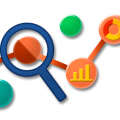Service automation is the process of integrating all domain tools and functionality into several layers of automation in order to have a unified interface for all workflows. It is the process of automating events, processes, tasks and business functions. Service automation, at its very core, is the provision of a service, but not in a fully automated way. This means that you, as a user of that service, can decide when you want to use a specific service.
It also means that you make all the necessary arrangements to use that service through some type of application or portal (that is, if the service is properly designed, it means that you don't need to talk to anyone from the service provider). Service automation is also called “service orchestration”, because it involves coordinating multiple processes to produce a result. While task automation accomplishes a specific action, service automation streamlines a process with many variables and possible results. Motion-sensitive lights always turn on when activated; every maintenance request is different.
Automated customer service is anything that allows your customers to solve problems without interacting with another person. At first glance, it might seem counterintuitive to take people out of the problem-solving equation. However, software has come a long way since the days when people were desperately trying to contact a human on the other side of an automatic voice recording. If you want to start offering automated services, you'll have to change your current service model (on the left) to the service model you see on the right. In any case of service automation, “automation” allows the service by streamlining the request for that service.
As mentioned above, I consider that the automation of services is a very simple process in which a series of sequential steps must be performed. The service automation framework is more complex for variable tasks, as well as for those with more touchpoints. Focus on automating business services that provide value and look for ways to harness this value with as little human interaction as possible. They took a traditional service (going from A to B or watching a TV series) and completely automated every step of that service experience. Looking at the success of service automation companies, you might be wondering how you can leverage the idea of service automation in your organization. Communication and interaction in any service can be initiated by the user (“Can you send me a quote?”) or by the service provider (“a new invoice is attached”).
Keep in mind that service automation doesn't mean that an organization should offer a digital service. In the IT industry, consulting firms and managed service providers (MSPs) can use professional services automation software to help run their daily operations. Professional Services Automation (PSA) is a type of software application package that provides a service company with the functionality it needs to manage core business processes. As with any automation, the main benefits of automating services are convenience, time savings, predictability and convenience, which translates into cost savings. Monitor your automated customer service by collecting as much data as you can and auditing it frequently.
PSA software provides essential business automation for professional services organizations, such as law firms and accounting associations. Service automation can help businesses save time and money while providing customers with an improved experience. Automated customer services allow customers to solve problems without having to interact with another person. Professional Services Automation (PSA) software provides essential business automation for professional services organizations such as law firms and accounting associations. By leveraging automated services, businesses can streamline processes and save time while providing customers with an improved experience. Unlocking the benefits of service automation for your business requires careful planning and implementation.
To get started, identify areas where manual processes are slowing down operations or creating customer dissatisfaction. Then look for ways to automate those processes using existing technology or by investing in new solutions. Once you have identified areas where automation can help improve efficiency or customer satisfaction, create an implementation plan and set up systems to monitor performance. Service automation can help businesses save time and money while providing customers with an improved experience. By leveraging automated services, businesses can streamline processes and save time while providing customers with an improved experience. By taking advantage of automated services, businesses can reduce costs while improving customer satisfaction levels.
Automated customer services allow customers to solve problems without having to interact with another person while also freeing up staff resources for more complex tasks. Professional Services Automation (PSA) software provides essential business automation for professional services organizations such as law firms and accounting associations.











